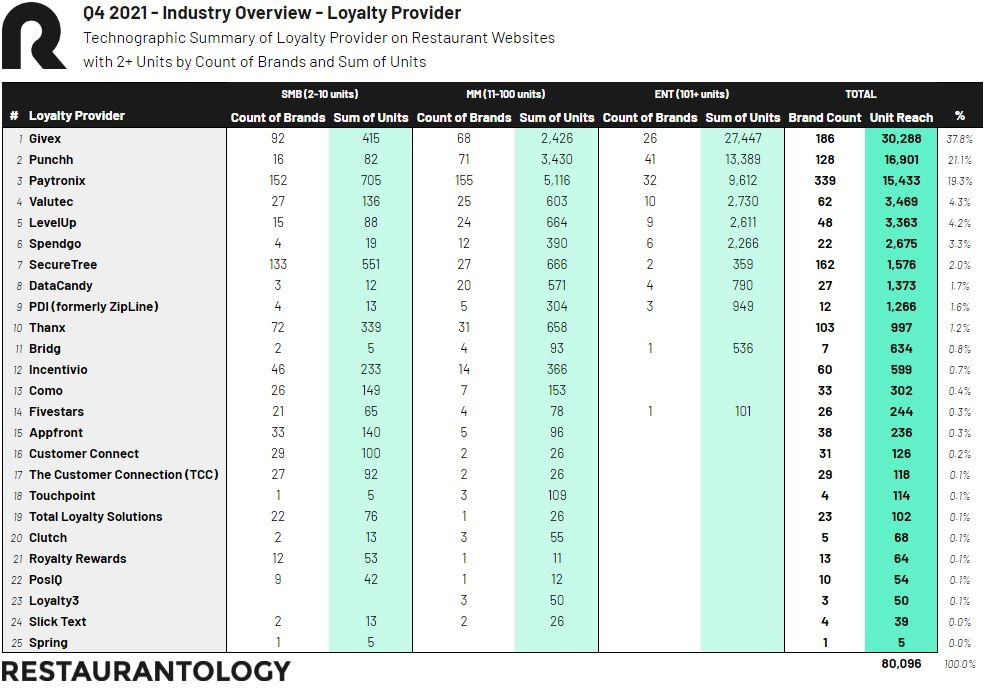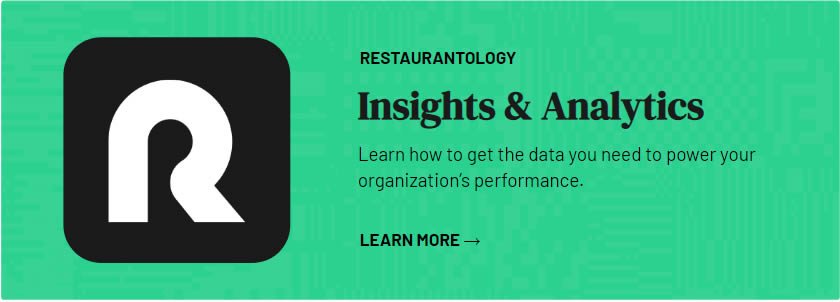How do data-driven restaurants focus on customer loyalty?

From perks and points to clubs with targeted email marketing, restaurants are turning to loyalty partners to “surprise and delight” their guests.
As of Q4 2021, an estimated 8% of multi-unit restaurant concepts, reaching just over 80,000 restaurant locations, have one of 25 largely industry-specific loyalty providers integrated into their website.

Calculating, understanding, and ultimately influencing Customer Lifetime Value (CLV) is becoming critical for data-driven restaurateurs. Tracking things like recency, frequency, and spend is no easy task, particularly for smaller independent and SMB brands, and vendors of all sizes are lining up to help out.
To offer a more complete view of each individual guest, many loyalty companies are expanding their initial footprint — initially limited to guests who willingly enroll in a loyalty program — to now include numerous new data ingestion points and intricate integration landscapes combining things like online ordering, POS transaction data, mobile app profile data, and more.
This follows a much larger industry trend, which is to put as much of the restaurant’s guest data directly into the hands of the restaurateurs themselves. In doing so, restaurants can take back control of their brand, target their messaging, and perhaps even influence their top-line revenue.

Notes about our data
Restaurantology currently collects and analyzes public multi-unit restaurant data for the US and Canada. Restaurantology insights are intended to help our customers have a better, more strategic understanding of the hospitality industry. Our data can help reduce the time from insight to action via a unified body of knowledge that customers can search, browse, and use as they see fit.


